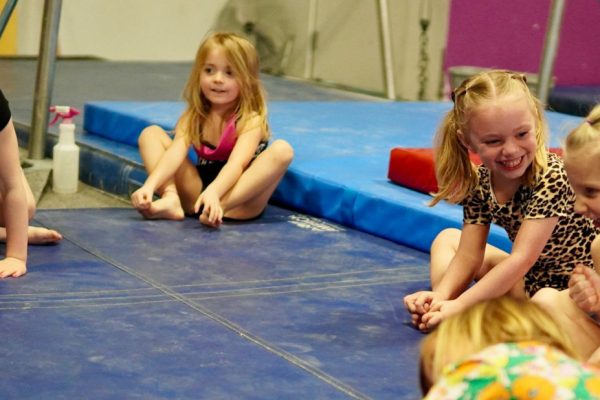
Understanding the difference between speech & language development
The acquisition of speech and language is a pivotal developmental stage for our children, moulding their ability to communicate, articulate thoughts, and foster literacy skills.
In everyday life, the terms ‘speech’ and ‘language’ are often used interchangeably. However, when health professionals use those terms, they are describing two different things.
Here’s why.
Speech is about verbal communication and the features and functions that impact on the clarity of a person’s verbal output. It’s about how clear we sound to others when we’re talking. Speech is produced using the anatomy of the mouth and respiratory tract (including the lungs, vocal cords, lips and tongue) in a highly coordinated fashion to create sounds that make sense to the people who hear them.
Aside from the articulation (or pronunciation) of words, speech can be impacted by the rate of speech, pitch, volume or other characteristics. Someone may speak softly and quickly, for example, or have difficulty articulating certain letter sounds, which makes it hard for others to understand them.
Language, however, is any system used to communicate meaning. It can include spoken or written words and symbols, plus hand and body gestures. AUSLAN, for example, is the sign language of the Australian deaf community. It’s how we share ideas, express our needs and interact with others.
Speech and language difficulties in children
Because speech and language are different, so are the disorders associated with them.
In children, a speech delay or disorder usually presents with speech sound errors that impact on their speech clarity. For example, they could be having difficulty with accurately producing certain sounds, or missing out on saying some sounds in words, or replacing some sounds with others. Speech therapy for kids helps to address speech difficulties like these.
When they’re learning to speak, it is natural for young children to make “errors” with some sounds. You’ve probably heard a toddler say “lellow” when they mean “yellow”, for example, or exclaim “look at the big twuck!” When articulation errors still occur past a certain age, it can indicate the child has a speech delay or impairment.
In contrast, because language is about meaning, a child with a language delay or disorder can have difficulty understanding what is said or have limited vocabulary to communicate their needs, wants and thoughts. Or, they may have difficulty with both understanding and expressing language.
Difficulty in understanding what is being said is known as a receptive language difficulty. Difficulty in communicating what they want to, such as their thoughts or needs, is called an expressive language difficulty. For example, a child may be able to pronounce words perfectly, but have difficulty finding the right ones or putting them into a logical sequence.
A child who is understanding or expressing less than what is typical of their peers could have a language delay.
Speech and language delays or impairments may occur separately. Other children may have both types of difficulties. Sometimes, one type of difficulty can impact on the other.
Speech and language development: what to expect
While children develop speech and language at different rates, certain skills usually start to emerge by certain ages. These speech and language milestones can help you know whether your child’s skills are developing typically.
Here’s a guide about what to expect in typically developing children aged 12 months to five years.
12 MONTHS
- Starting to understand simple commands (the word “no”, for example)
- Can recognise their own name and familiar sounds
- Can understand the names of familiar objects and people
- Beginning to produce a few basic words between 12-18 months of age
- Making babbling sounds that imitate speech
- Uses body language and vocalisations (to get attention, for example)
TWO YEARS
- Speech can be understood 50 percent of the time
- Producing the sounds m, n, h, and beginning to use some others
- Can say more than 50 words
- Producing some two-word combinations (bye mummy, for example)
- Understands simple two-part sentences and directions
- Uses words more often than gestures to communicate
- Beginning to use language with peers
THREE YEARS
- Speech can be understood 75 percent of the time
- Producing the sounds p, w, d, g, k
- Can follow familiar directions and understand ‘wh-’questions (who, what, when, where, why)
- Understands basic location concepts such as ‘in’, ‘on’, ‘under’, and other descriptive words such as ‘hot’, ‘big’, ‘soft’
- Uses negatives (for example ‘no’, ‘not’, ‘don’t, ‘can’t’)
- Uses three-to-four-word sentences in a simple conversation
FOUR YEARS
- Some speech errors are expected, but they can generally be understood in conversation
- Producing the sounds j, ch, t, b, l, s, y, f,sh
- Understands the names of basic shapes and colours
- Strong use of language during play to communicate with peers
- Asks ‘who’, ‘what’, ‘when’, ‘where’, ‘why’ and ‘how’ questions
- Large vocabulary and able to produce four-to-five-word sentences
- Uses basic grammar, with some mistakes expected (eg ‘I falled down’)
FIVE YEARS
- Speech can be understood almost all the time
- Beginning to produce the sound r (still may have difficulty with z, th, v) • Understands opposites (eg big/small, wet/dry)
- Uses longer sentences (approximately 6 words) with mostly correct grammar
- Explains ‘why’ things happen (eg ___because ___)
- Follows more complex, three-stage directions
- Expresses how they feel and explains events and occurrences
Signs your child may have a speech or language delay or impairment
Signs that may be of concern include your child:
- not understanding their name, the word ‘no’, or simple commands by 12 months of age
- not saying any words by 14 to 16 months of age
- being unable to answer basic “wh” questions (what, where, who) by three
- having difficulty being understood by people outside your family after age three
- being unable to tell a story with a beginning, middle and end by age five
- showing limited vocabulary development compared to their peers
- having difficulties with using correct grammar or words in a sentence
- showing difficulties with speech development, articulation, stuttering or dyspraxia
- having issues with voice quality, volume, and awareness
- experiencing frustration and difficulty expressing themselves.
How does speech pathology help?
Speech-language pathology can help your child if they’re struggling with communication issues, such as expressing themselves, understanding instructions, pronunciation, lisping or stuttering. Speech-language pathology is all about helping children learn to speak and communicate clearly – vital skills for now and the future.
Speech therapy for kids works by helping them to:
- understand what is being said to them
- speak clearly by learning skills for correct articulation
- create sentences that effectively express their needs, thoughts and feelings
- manage speech impairments such as lisping and stuttering
- develop voice control – quality, volume, tone, pitch and awareness of voice
- develop oro-motor skills including – movement and muscle tone in the jaw, cheeks, lip and tongue and structure of the palate, teeth, and tonsils.
If you are concerned about your child’s speech or language development, it’s important they are assessed by a speech-language pathologist. Don’t delay getting an assessment, because early intervention is known to achieve better outcomes.
This article was developed by Growing Early Minds and republished here with permission.






